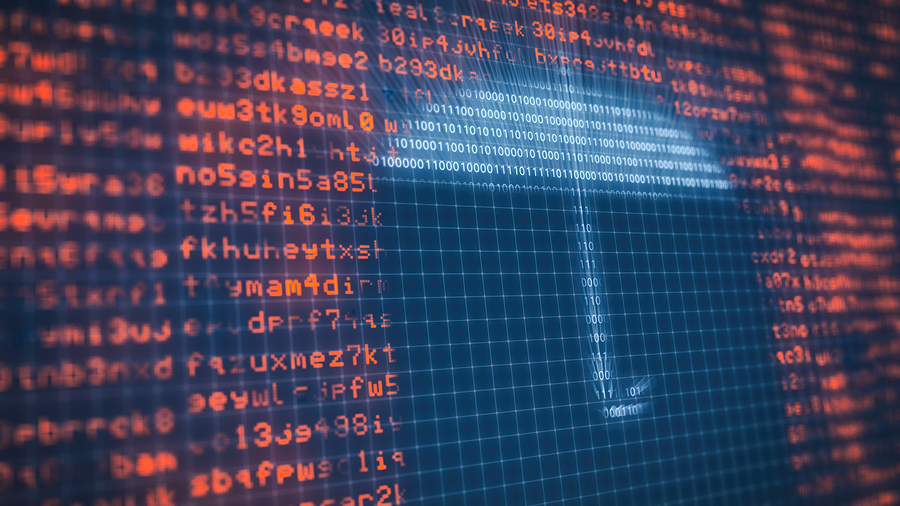Crucial Cyber Security Practices for Effective Data Destruction Methods
The Essential Nature of Information Damage in Upholding Computer Safety Solutions and Protecting Against Unauthorized Access
In an era where information breaches and identity burglary are significantly widespread, the relevance of efficient data damage can not be overstated. Organizations must acknowledge that the failure to correctly take care of sensitive details postures not only legal and economic threats however also a potential erosion of client trust fund. Numerous methods, from data cleaning to physical damage, offer as essential safeguards versus unauthorized gain access to. Nevertheless, comprehending the implications of information destruction methods and compliance with regulations elevates essential inquiries regarding the adequacy of present methods and their long-term stability when faced with evolving dangers.
Importance of Data Devastation
In a progressively electronic world, the value of information devastation can not be overstated. As companies accumulate huge amounts of sensitive details, the prospective consequences of falling short to correctly take care of and get rid of of that data end up being increasingly extreme. Data violations, identity theft, and business espionage present substantial threats, emphasizing the requirement of efficient data damage methods.

In addition, as modern technology advances, so too do the approaches by which destructive stars seek to exploit sensitive information. Organizations must continue to be proactive and attentive in their data destruction techniques to guard against these advancing dangers. By focusing on data damage, companies not only shield their possessions but likewise foster count on among stakeholders and clients, showing a commitment to accountable data monitoring and protection methods.
Techniques of Effective Information Devastation
To ensure the irreversible and full devastation of sensitive information, organizations can utilize a selection of efficient techniques tailored to their specific requirements. One of one of the most common approaches is information cleaning, which involves utilizing specialized software program to overwrite existing data several times, making healing essentially impossible. This is especially beneficial for disk drives and solid-state drives, where traditional deletion approaches are insufficient.
An additional effective technique is degaussing, which uses strong electromagnetic fields to disrupt the magnetic domains on storage space media, rendering the information irretrievable. This technique is specifically fit for magnetic storage space devices, such as tape drives and hard drives.
Physical devastation is likewise a sensible choice, including the shredding, crushing, or incineration of storage space gadgets. This approach guarantees that data can not be recovered, making it excellent for companies taking care of very sensitive info.

Compliance With Data Protection Regulations
Organizations need to not just concentrate on effective information destruction techniques but likewise guarantee conformity with data security guidelines that control how sensitive details is managed and disposed of. Abiding by these regulations is crucial for guarding personal information and keeping customer trust fund. Regulations such as the General Information Defense Guideline (GDPR) in the European Union and the Health And Wellness Insurance Coverage Transportability and Liability Act (HIPAA) in the USA impose strict standards on information monitoring, that include requirements for the protected disposal of delicate information.
To achieve conformity, organizations need to apply comprehensive information devastation plans that line up with these legal frameworks. This includes recognizing information that calls for devastation, developing methods for safe and secure methodsâEUR" such as shredding physical media or using software application that satisfies sector criteria for information wipingâEUR" and preserving in-depth records of destruction tasks. Regular audits must be carried out to make sure adherence to explanation these plans and to identify any potential locations for renovation.
Failure to follow data security laws can lead to significant legal pop over here ramifications, including substantial fines and damages to an organization's online reputation. For that reason, integrating conformity into information devastation practices is not only a lawful commitment yet additionally a crucial component of a robust information safety technique.
Effects of Poor Information Handling
Poor data handling can result in severe repercussions that extend beyond prompt functional problems. Organizations might face substantial economic losses as a result of data breaches, which typically lead to expensive removal initiatives, lawful fees, and governing fines. These economic ramifications can strain resources and prevent growth, ultimately impacting an organization's profits.
In addition, poor information handling can seriously damage a company's online reputation. Consumers, companions, and stakeholders may shed count on an entity that falls short to shield delicate information, resulting in decreased customer commitment and potential loss of business opportunities. This erosion of trust can take years to rebuild, if it can be restored whatsoever.
Furthermore, companies could encounter lawful implications developing from non-compliance with information security guidelines. Such infractions may cause investigations and charges, worsening the monetary worry and more tarnishing the organization's photo.
In the realm of cybersecurity, insufficient data monitoring methods can produce vulnerabilities that make systems my latest blog post extra at risk to unauthorized accessibility and cyberattacks. Inevitably, these consequences emphasize the critical relevance of executing robust information managing procedures to guard delicate info and maintain business honesty.
Finest Practices for Secure Data Disposal


To start with, data ought to be identified according to its level of sensitivity. Delicate information requires more rigorous disposal methods, such as shredding physical files and making use of sophisticated software application for digital data wiping. Employing licensed information damage solutions ensures compliance with industry laws and criteria.
Second of all, organizations need to carry out a data disposal policy that mandates normal audits. This policy must lay out the procedures for data retention and devastation, making certain that out-of-date data is thrown away promptly and safely. Educating employees on these procedures is crucial to fostering a society of protection recognition.
Finally, preserving comprehensive records of disposed information enhances responsibility and offers a clear audit trail. This documentation ought to include the kind of information ruined, the technique utilized, and the date of disposal.
Verdict
Adopting durable approaches such as data cleaning, degaussing, and physical devastation, together with conformity with policies like GDPR and HIPAA, is crucial for protecting delicate info. Overlooking appropriate data disposal practices can lead to extreme repercussions, including information violations and legal consequences.
In an age where data violations and identity burglary are significantly prevalent, the importance of efficient information damage can not be overemphasized. data destruction. Information breaches, identification theft, and corporate reconnaissance posture significant risks, highlighting the need of effective data damage techniques
Conformity with regulations such as GDPR and HIPAA mandates that organizations implement rigorous data security procedures, including the protected devastation of data at the end of its lifecycle.
By focusing on data damage, companies not only shield their assets but additionally foster count on amongst stakeholders and clients, showing a commitment to liable information management and protection practices.
Organizations need to not just concentrate on reliable data destruction approaches but additionally ensure conformity with data protection policies that control just how sensitive details is handled and disposed of.